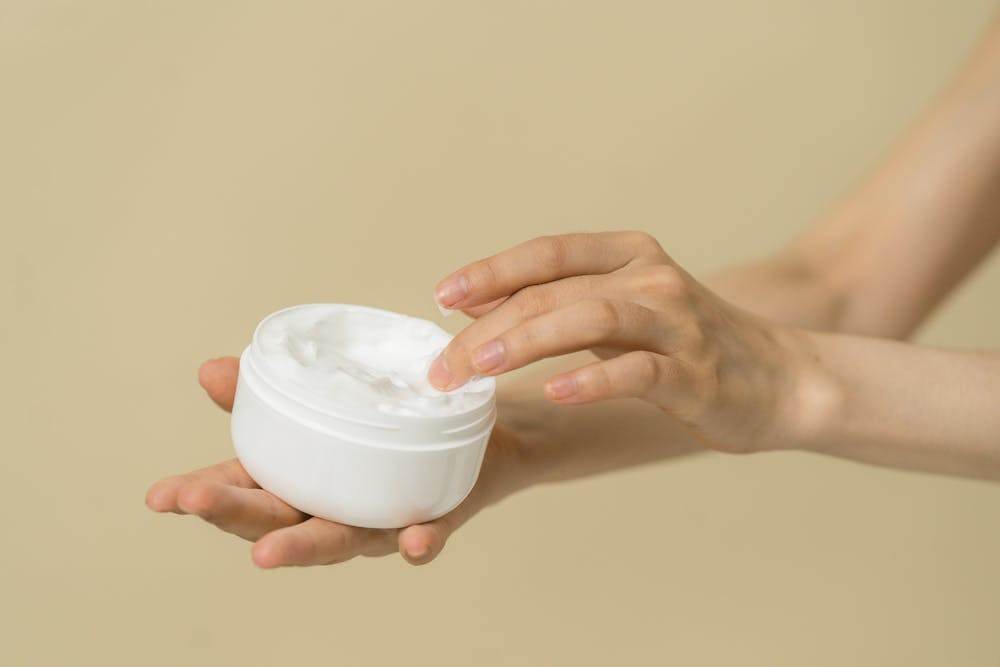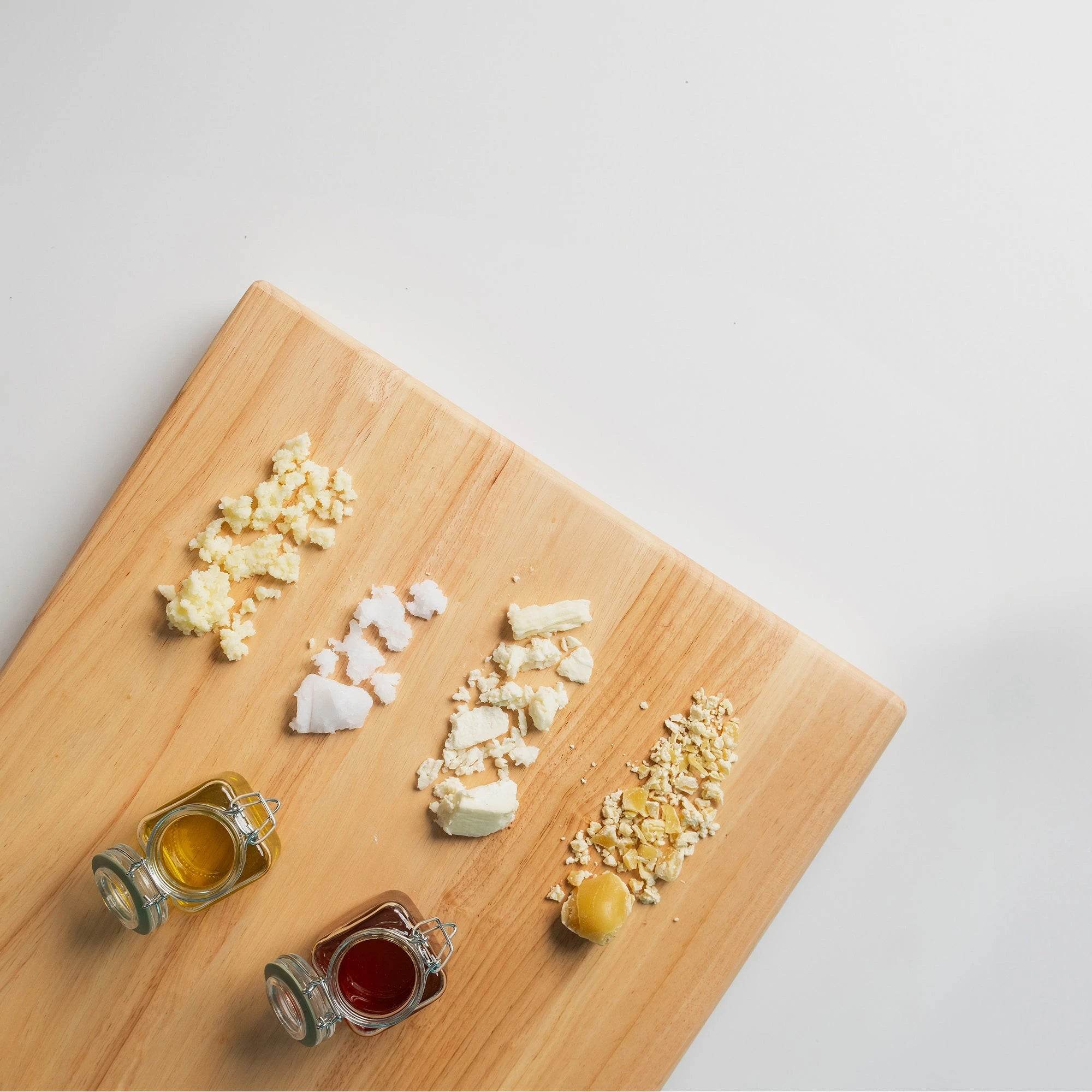The natural skincare world has been buzzing about tallow sunscreen, and if you're curious about what makes it different from conventional options, you're in the right place. Let's break down what tallow sunscreen actually is, why it's gaining popularity, and how to use it effectively.
Understanding Tallow Sunscreen
Tallow sunscreen combines rendered fat from grass-fed cattle with mineral-based sun protection, typically non-nano zinc oxide. Before you dismiss this as unconventional, consider that high-quality beef tallow has been used for skin care for centuries, and there's solid science behind why it works so well.
The fatty acid profile of grass-fed tallow closely mirrors human sebum, which is why your skin absorbs it so readily. It's packed with fat-soluble vitamins A, D, E, and K, nutrients that support skin health, repair, and protection. When you combine this nutrient density with mineral sun protection, you get something that both shields and nourishes your skin.
How Tallow Sunscreen Works
Unlike chemical sunscreens that absorb UV rays and convert them to heat within your skin, tallow sunscreen uses a physical barrier approach. The non-nano zinc oxide sits on your skin's surface and reflects UV rays away, similar to how a mirror works.
Here's what makes this combination effective:
The zinc oxide provides broad-spectrum protection against both UVA and UVB rays. Because the particles are "non-nano" (larger than 100 nanometers), they stay on your skin's surface rather than penetrating into deeper layers or entering your bloodstream.
The tallow base serves multiple purposes. It helps the zinc oxide spread evenly and adhere to your skin. The natural waxes in tallow-based formulas create water resistance. And most importantly, the vitamins and fatty acids actively support your skin's natural defense mechanisms while you're wearing it.
Key Benefits of Tallow-Based Sun Protection
Skin Compatibility: Because tallow's composition is so similar to your natural sebum, it typically doesn't clog pores or cause the irritation some people experience with conventional sunscreens. This makes it suitable for most skin types, including sensitive and acne-prone skin.
Nutrient Support: Every application delivers vitamins that support cellular function. Vitamin A helps with cell turnover, vitamin E provides antioxidant protection against free radicals, vitamin D supports skin immunity, and vitamin K aids in healing.
Moisture Retention: The emollient properties of tallow help prevent the dryness that many mineral sunscreens cause. Your skin stays hydrated throughout sun exposure rather than feeling tight and parched.
No Harmful Chemicals: Tallow sunscreens avoid synthetic preservatives, fragrance chemicals, and hormone-disrupting ingredients found in many conventional options.
Understanding how beef tallow benefits skin helps explain why this ingredient works so well in sun protection formulas.
What to Look For in Quality Tallow Sunscreen
Not all tallow sunscreens are created equal. The source and quality of ingredients make a significant difference in effectiveness.
Tallow Source: Look for tallow from 100% grass-fed cattle. Grass-fed tallow contains higher levels of vitamins and beneficial fatty acids compared to grain-fed alternatives. Some premium products use Wagyu tallow from regeneratively raised cattle, which offers the highest nutrient density.
Zinc Oxide Type: Verify that the product uses non-nano zinc oxide. The particle size matters non-nano particles provide effective protection without penetrating your skin barrier.
Complementary Ingredients: Quality formulations include other beneficial ingredients like organic olive oil (rich in polyphenols), unrefined coconut oil (antimicrobial properties), organic beeswax (water resistance), and shea butter (additional moisture).
Processing Methods: Look for products that use gentle rendering and minimal processing to preserve the natural nutrients in tallow.
How to Apply Tallow Sunscreen
The application technique for tallow sunscreen differs slightly from conventional sunscreens, but it's straightforward once you understand the process.
Step 1: Warm It Up Tallow is solid at room temperature but melts at body temperature. Scoop a small amount (about the size of a nickel for your face) and warm it between your palms for 15-20 seconds. This softens the balm and makes spreading easier.
Step 2: Apply in Sections Work in sections rather than trying to cover your entire face at once. Start with your forehead, then move to each cheek, your nose, and your chin. This ensures even coverage.
Step 3: Blend Thoroughly Take your time rubbing the product into your skin. Unlike spray sunscreens, tallow sunscreen requires thorough blending. The natural tints in many formulas help you see where you've applied and where you might have missed spots.
Step 4: Allow Absorption Give it a minute or two to fully absorb before getting dressed or applying makeup. The tallow will sink into your skin, leaving the zinc oxide layer on the surface.
Step 5: Reapply as Needed Reapply every two hours during prolonged sun exposure, or after swimming or heavy sweating. Even though tallow sunscreen is water-resistant, consistent reapplication ensures continuous protection.
Best Practices for Different Situations
Daily Wear: For regular daily use when you're not spending extended time outdoors, one application in the morning is typically sufficient. The moisturizing properties make it work well as a combination moisturizer and SPF.
Beach or Pool: Apply 15 minutes before sun exposure to allow full absorption. Reapply after swimming, even though the formula is water-resistant. Pack your jar in a small cooler or bag to prevent melting in direct sun.
Active Outdoor Activities: For hiking, running, or other activities where you'll sweat, apply a slightly thicker layer and reapply every 90 minutes to two hours.
Sensitive Areas: Pay extra attention to often-missed spots like your ears, back of your neck, and the tops of your feet if wearing sandals.
Adjusting to Tallow Sunscreen
If you're switching from conventional sunscreens, expect a brief adjustment period. Here's what's normal:
Texture Differences: Tallow sunscreen feels richer and more nourishing than synthetic formulas. It takes a bit longer to rub in completely, but most people come to appreciate this as it signals quality, natural ingredients.
Application Time: Plan for an extra minute or two during application. The trade-off is that you're applying a product that's both protecting and improving your skin.
Visual Changes: Many tallow sunscreens have a slight natural tint that blends with your skin tone, eliminating the white cast of traditional zinc oxide. This actually makes it easier to see even coverage.
Skin Response: Within a few days, most people notice their skin feels more hydrated and less irritated compared to chemical sunscreens. For those with acne-prone skin, tallow often helps balance oil production rather than causing breakouts.
Storing Your Tallow Sunscreen
Proper storage extends the life and maintains the quality of your tallow sunscreen:
- Keep it in a cool, dry place away from direct sunlight
- Tallow can soften in heat above 75°F, which doesn't affect its effectiveness but may change the texture
- If it does melt, simply refrigerate it briefly to resolidify
- Most tallow sunscreens come in glass jars, which preserve product integrity better than plastic
- Integration with Your Skincare Routine
Tallow sunscreen fits seamlessly into most skincare routines. Here's how to incorporate it:
Morning Routine: After cleansing and applying any serums, use tallow sunscreen as your final step. It serves as both moisturizer and sun protection, simplifying your routine.
With Other Products: Allow any water-based serums to absorb fully before applying tallow sunscreen. The occlusive nature of tallow can seal in whatever you apply underneath.
Evening Care: While tallow sunscreen is designed for daytime use, some people enjoy using plain tallow products at night for deep nourishment.
Comparing tallow sunscreen to conventional moisturizers shows how it can replace multiple steps in your routine.
Understanding the Long-Term Benefits
Beyond immediate sun protection, regular use of tallow sunscreen can support overall skin health:
The vitamin A content supports natural cell renewal, helping maintain skin texture and tone. Vitamin E provides ongoing antioxidant protection, shielding your skin from environmental damage even when you're not in direct sun. The fatty acids strengthen your skin barrier, improving its ability to retain moisture and defend against irritants.
Many users report that after several weeks of consistent use, their skin appears more resilient, with improved texture and a healthy glow that comes from genuinely nourished skin rather than synthetic additives.
Making an Informed Choice
Choosing tallow sunscreen means prioritizing ingredient quality and skin health alongside sun protection. It represents a shift from viewing sunscreen as just a protective barrier to seeing it as an opportunity to actively nourish your skin while staying safe in the sun.
Whether you're looking for a gentler alternative to chemical sunscreens, seeking products with cleaner ingredients, or simply curious about traditional skincare wisdom backed by modern understanding, tallow sunscreen offers a compelling option worth exploring.
The most important factors are selecting a quality product from reputable sources and applying it correctly and consistently. With proper use, tallow sunscreen provides effective protection while supporting your skin's natural health and resilience.




